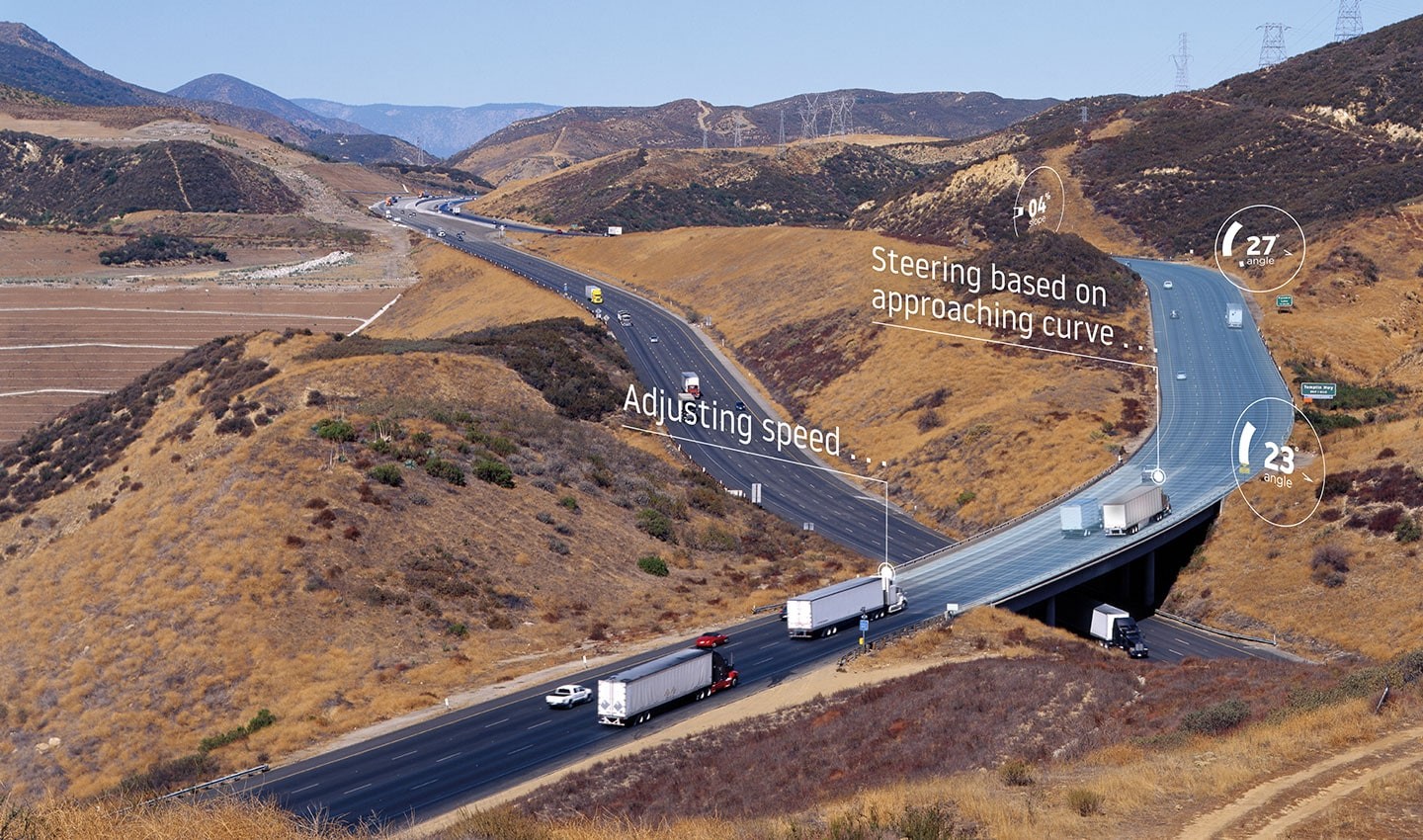How ADAS helps truck drivers stay safe and drive efficiently
&w=256&q=90)

Professional truck drivers have a demanding job. Not only do they need to drive a fully loaded truck for the better part of the day, but they must do so as quickly and efficiently as possible while keeping themselves and their cargo safe on the road.
Thankfully, there is technology to make their drive more comfortable and more efficient: ADAS. This stands for advanced driver-assistance systems and, much like the experience of this German truck driver shows, this technology gives drivers peace of mind and helps the vehicle save fuel. It does so by accurately anticipating the road at hand and ahead.
Around the world today, over one million SAE Level 1 and Level 2 automated vehicles use the TomTom ADAS Map – both private and commercial. Having doubled in less than one year, this number is bound to rise in the future. As more and more automated vehicles hit the road, how does this technology work?
Let’s have a look at the TomTom ADAS Map.
A highly accurate map for driver assistance
There are two main benefits for automated commercial vehicles equipped with a TomTom ADAS Map: comfort and fuel efficiency.
The ADAS Map integrates with in-vehicle control systems to pro-actively adapt speed and gear shifting. This is called predictive powertrain control (PPC). Such technology increases drivers’ comfort as they don’t have to worry about shifting gears and can focus on other tasks. It also helps them avoid braking abruptly or gaining speed when driving uphill.
PPC leverages six types of information within the map: road gradient, road curvature, curvature at junctions, lanes at junctions, traffic signs and speed restrictions.
When a vehicle uses the TomTom ADAS Map, the combination of these six elements increases comfort and decreases fuel consumption. The result is a tangible impact to the bottom line: vehicles using the TomTom ADAS Map have proven to achieve up to 5% fuel savings.
Driver assistance increases safety while driving
As control starts moving from the driver to the vehicle, data that aids decision-making on the road is essential to a safer ride.

More advanced ADAS use cases, such as highway assist, combine adaptive cruise control with lane keeping assist. By controlling acceleration, coasting, braking and steering, the map helps determine the right speed for the vehicle.
Due to the way these features work together to support a safer driving experience, using the TomTom ADAS Map can also help automakers achieve higher Euro NCAP ratings.
Driver assistance optimizes fuel consumption
For some businesses, success depends on meeting delivery times while minimizing costs.
The eco-routing, range calculation and PPC use cases of the TomTom ADAS Map help vehicles plan the most efficient route and optimize powertrain efficiency.
 Covering 5.5 million kilometers and updated every week, the TomTom ADAS Map is available in both Multinet-R and Navigation Data Standard (NDS) formats. If you are a fleet or logistics company looking to reduce costs while improving the efficiency of your commercial vehicles, check out the product sheet to learn more.
Covering 5.5 million kilometers and updated every week, the TomTom ADAS Map is available in both Multinet-R and Navigation Data Standard (NDS) formats. If you are a fleet or logistics company looking to reduce costs while improving the efficiency of your commercial vehicles, check out the product sheet to learn more.Want to learn more?
Download the TomTom ADAS Map product sheet.
People also read
)
The TomTom Traffic Index: An objective measure of urban traffic congestion
)
Measuring road traffic density: what you need to know
)
Behind the map: how we keep our maps up to date
* Required field. By submitting your contact details to TomTom, you agree that we can contact you about marketing offers, newsletters, or to invite you to webinars and events. We could further personalize the content that you receive via cookies. You can unsubscribe at any time by the link included in our emails. Review our privacy policy.